You’ve heard of white tea and yellow tea – but what about purple tea? We have everything that you need to understand this unusual tea.
What is purple tea?
Unlike yellow, green, oolong, black, dark or white tea; purple tea is not a tea type – it’s a number of specific cultivars that can be used for making all types of tea. Furthermore, there are naturally occurring purple leaf varietals and modern cultivars that have been purposely developed for the purple leaf.
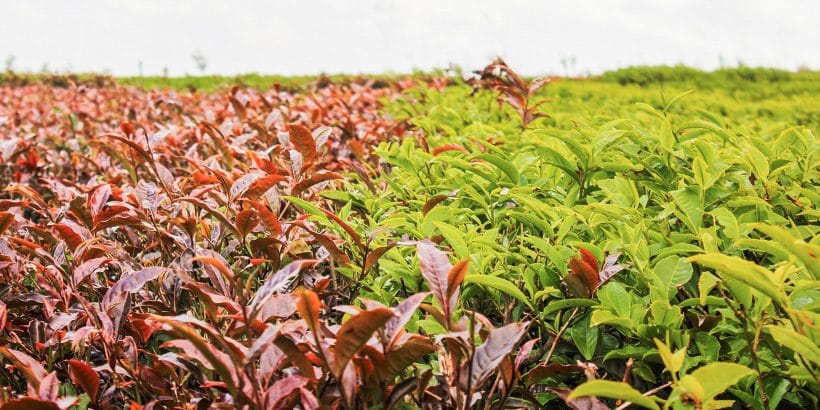
Naturally occurring purple tea grows at high elevations — around 4,500 – 7,500 feet. These are largely found in Yunnan Province of China and surrounding countries. The leaves are full of compounds such as anthocyanins and polyphenols which protect the tea from the cold conditions and intense exposure to UV light. This is what causes the leaves to turn purple. However, just because the leaves are purple, this doesn’t mean that your cup of tea will be purple, too!
Health benefits
These anthocyanins and polyphenols don’t just change the colour of the leaves – they are also antioxidants. Anthocyanin is a type of flavonoid most often associated with blueberries, as it is the chemical responsible for giving plants and berries their notable deep, dark blue or purple color. Purple tea has actually more anthocyanins than blueberries!
Furthermore, it also has more polyphenols than black or most green teas. These antioxidants are believed to improve health such as preventing cell damage, enhancing the immune system and giving cardiovascular benefits.
The caffeine content in purple tea is also lower than that of black tea. If you’re very sensitive to caffeine, purple teas are a great option for you. Of course, the end results differ greatly depending on how the tea is processed as different processing methods alter the final chemical composition of the leaf.
Our purple tea
Purple tea doesn’t just have health benefits – it also tastes delicious, too. It naturally has fresh, sweet flavours similar to plums and blueberries.
We offer a few different purple tea varietals in our shop:
1. Ye Sheng
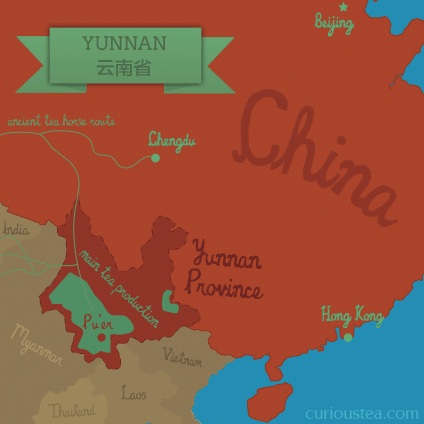
Ye Sheng (野生) purple leaf varietal is considered to be the ‘original’ purple tea which grows at high altitude in Yunnan Province in China. These teas come from an unusual varietal of Camellia sinensis, C. s. var. dehungensis that is used throughout Yunnan Province for pu-erh production.
It is normally very bitter when made into a sheng pu-erh, but it develops beautifully rounded flavour and complexity with age. It also can make a fantastic black tea!
One of our own examples is the Dian Hong De Hong Ye Sheng black tea which is made from this Ye Sheng varietal. It produces an amber liquor with a sweet, fruity aroma. The smooth complex taste is a little malty, tangy and spicy with notes of prunes and wheat.
2. Zi Ya, Yunnan
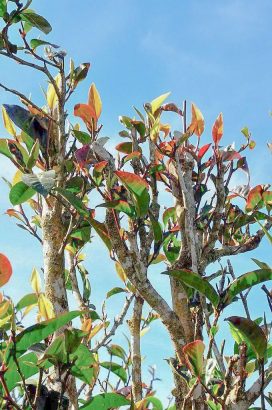
Zi Ya (紫芽) purple tea from Yunnan Province is a naturally occurring mutated version of Camellia sinensis var. assamica that is particularly favoured in production of pu-erh. However, some limited black tea production also occurs.
Our Zi Ya Purple Bud Wild Sheng Pu-erh is a 2016 vintage ‘sheng’ or ‘raw’ pu-erh from the Jing Mai Mountain area of Yunnan. It produces a smooth and light liquor, with a clean and brisk flavour that has fruity and sweet character with slightly smoky, woody notes.
3. Zi Ya, Wu Yi Shan
Zi Ya (紫芽) purple tea, confusingly bears the same descriptive name as the Zi Ya from Yunnan Province. However, this Zi Ya hails from Wu Yi Shan in Fujian Province and is a naturally occurring mutated version of Camellia sinensis var. sinensis instead. These plants are renowned for a particularly high anthocyanin level, leading to a higher degree of bitterness. These teas are very rare and hard to come by, but normally are processed in the style of classic roasted Wu Yi oolongs.
4. Zi Juan
Zi Juan (紫娟) is an uncommon cultivar that was developed in Yunnan in the late 1990’s by crossing the two Zi Ya strains from Yunnan and Wu Yi Shan. It is mostly used to make green and black tea.
Unlike the other purple leaf varietals, where the colour of the leaves on wild growing trees is changeable depending on the environmental conditions, and any one tree will only have a limited amount of purple buds, these Zi Juan cultivar plants are specifically selected for the number of purple leaves they produce. Also, unlike the wild counterparts that tend to have only purple buds, this cultivar produces purple buds, leaves and stalks, giving a higher yield.
One of our favourite Zi Juan teas is the Dian Hong Zi Juan Purple Beauty, a fruity Yunnan Red tea from Jing Mai Mountain. Dark twisted leaves produce an amber liquor with a light fruity aroma. The fresh and light character has notes of honey, prunes and apricots with a smooth, stony aftertaste.
5. Kenyan
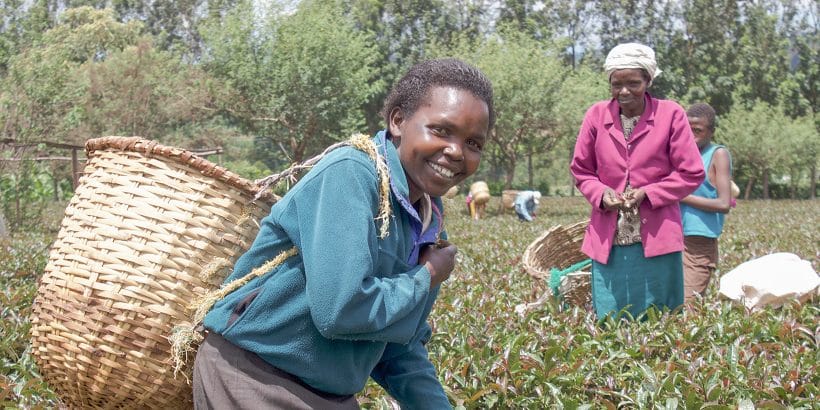
The Kenyan purple tea cultivar (TRFK306) was developed from standard Camellia sinensis var. assamica by the Kenyan Tea Research Institute over the past 25 years by a process of extensive breeding and selection. Unlike the naturally occurring purple leaf plants, these do not have to be grown at higher altitude. They also have very high levels of anthocyanins, especially when they are processed as green teas.
Our favourite tea here is our Tumoi Nandi Hills Purple green tea, which is a colour changing tea! When you brew this tea, the colour can range from pale green to a more reddish-purple and will change depending on the pH level of the water.
6. Sun Rouge
Sun Rouge (サンルージュ) is a Japanese purple leaf varietal that was developed in 2009 by crossing Camellia sinensis var. sinensis with Camellia sinensis var. taliensis. It is typically processed as a green tea.
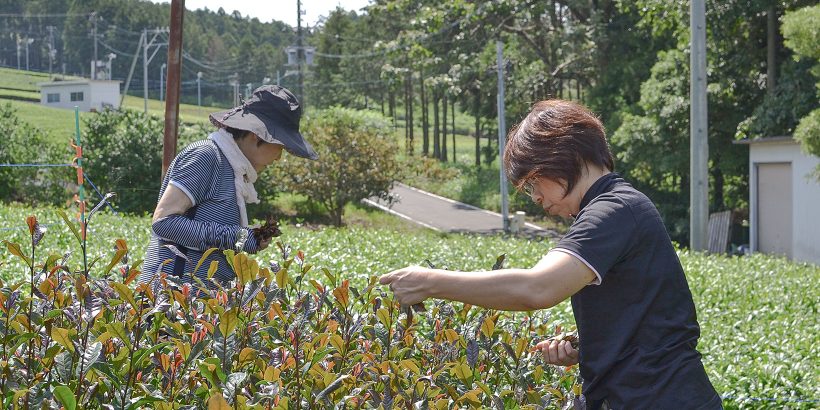
Finally, our own Sun Rouge is Tokunoshima Sun Rouge green tea. It is full of antioxidants and has a unique colour-changing liquor. The colour of the liquor changes depending on the water you use and comes out in a range of colours between: bright pink – colourless – purple-grey. The colour in your cup will largely depend on the pH level of the water that you use! When using water with a high pH (less acidic), the colour will be duller and darker. Sometimes called pink tea, you can also make this tea change colour by adding a few drops of lemon juice. The verdant flavour has savoury and peppery notes of broccoli and seaweed with a mineral, lightly astringent aftertaste.
Purple tea tends to be brewed similar to green and black teas, but we would always recommend reading each tea’s individual instructions.
Have you tried purple tea? Will you try it now that you know what it is?
If you learned something new from this post, please let us know on social media @curioustealtd.

